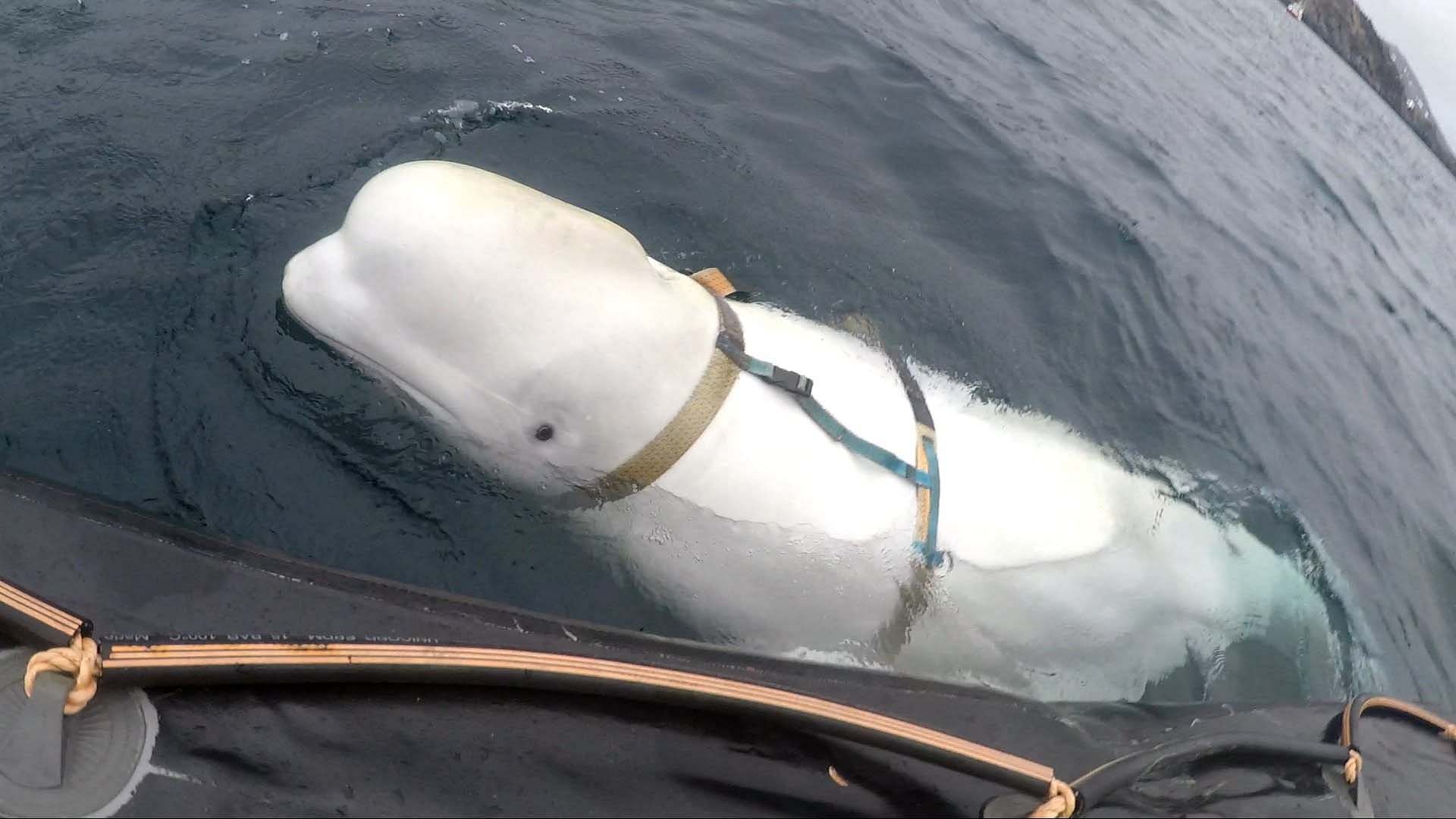
A beluga whale said to be a spy trained by the Russian navy, was spotted off the coast of Sweden on Sunday. The whale, which made news in 2019 when it was discovered off the Norwegian coast, had been slowly traveling down the top half of the Norwegian shoreline for more than three years.
The whale was spotted loitering at Hunnebostrand, off Sweden’s south-western coast, with marine experts trying to figure out how it got there.
“We don’t know why he has sped up so fast right now,” Sebastian Strand, a marine biologist with the OneWhale organization was quoted as saying by AFP.
“It could be hormones driving him to find a mate. Or it could be loneliness, as belugas are a very social species – it could be that he’s searching for other beluga whales,” he added.
The whale, estimated to be 13-14 years old, is at an age when hormone levels are skyrocketing. The whale has not seen another beluga since landing in Norway, according to sources.
When the whale, nicknamed “Hvaldimir,” was spotted, it was wearing a harness with an action camera attachment attached to it. The words Equipment St Petersburg were printed on the mount’s plastic clasps, sparking an international conspiracy idea that the whale was a Russian spy.
Notably, Moscow never verified or responded to suspicions that the whale was a “Russian spy” in any way.
Stay away from the beluga: Norway
The whale’s arrival in Swedish seas comes nearly a week after the Norwegian Directorate of Fisheries urged the public to “avoid contact” with the species so that it does not inadvertently injure or kill itself.
“We especially encourage people in boats to keep a good distance to avoid the whale being injured or, in the worst case, killed by boat traffic,” said Fisheries Director Frank Bakke-Jensen in a statement.
“We have always communicated that the whale in question is a free-living animal and we see no reason to capture it and put it behind barriers,” he added.
Beluga whales can live for 40 to 60 years, reaching a size of about six meters. They are generally found in the icy waters around Greenland, northern Norway, and Russia.
